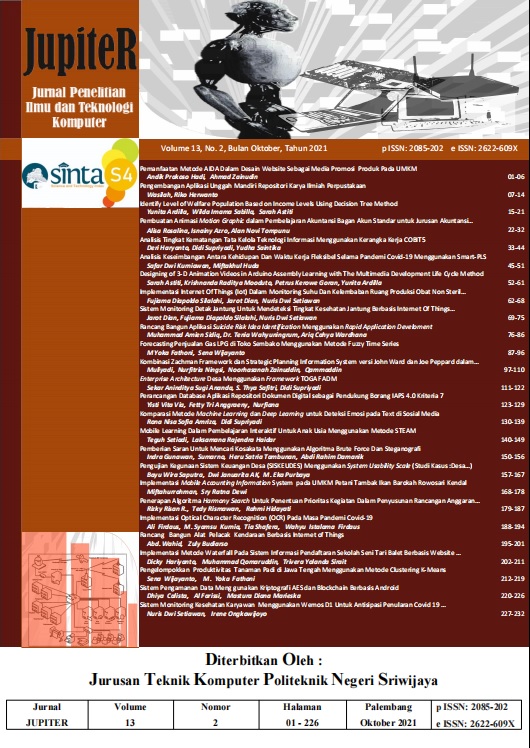Implementasi Internet Of Things (Iot) Dalam Monitoring Suhu Dan Kelembaban Ruang Produksi Obat Non Steril Menggunakan Arduino Berbasis Web
DOI:
https://doi.org/10.5281/3662.jupiter.2021.10Abstract
Information technology can improve the quality of work in industry. One of them is about monitoring temperature and humidity in non-sterile drug production rooms. This temperature and humidity is monitored by the QA (Quality Assurance) department, which is used to see if the temperature and humidity of the non-sterile drug production room is well conditioned. From the existing problems, it is necessary to have an intelligent system that can monitor temperature and humidity appropriately and periodically. One of them is the use of the Internet of Things (IoT) for Simulation of Temperature and Humidity in a Non-Sterile Drug Production Room using a Temperature Sensor (LM35) and an Arduino and Web-Based Humidity Sensor (DHT 22). This tool will detect the temperature and humidity in each non-sterile drug production room periodically, if the temperature exceeds the maximum limit in the non-sterile drug production room, the fan will turn on releasing hot air inside. From all the data that has been collected, it will be processed by the Arduino Uno R3 microcontroller and will be displayed on the website as an interface, for early detection on the website, a DC Fan appears which rotates when the temperature exceeds the maximum limit. Data transmission uses ESP8266 as a wireless module.







